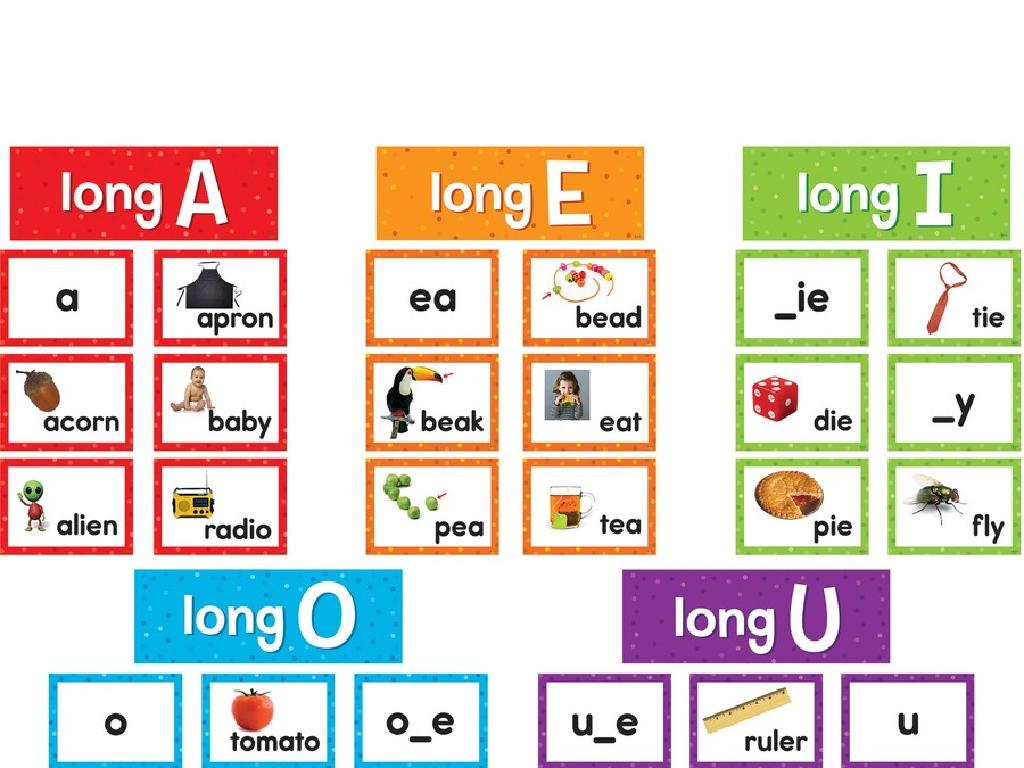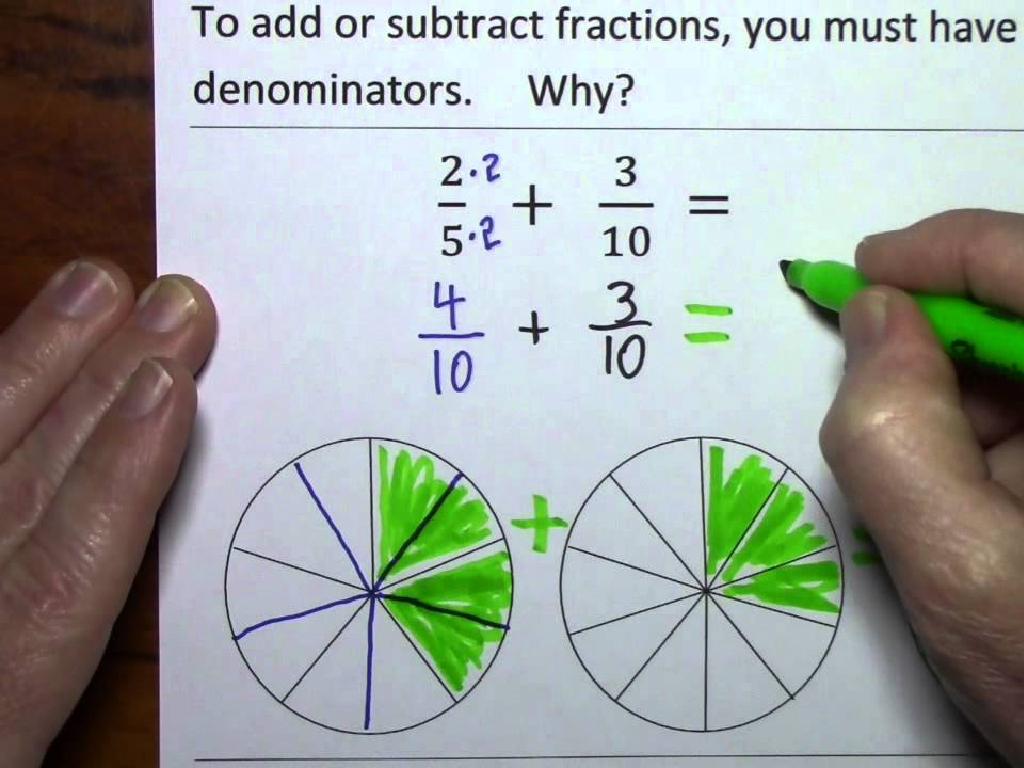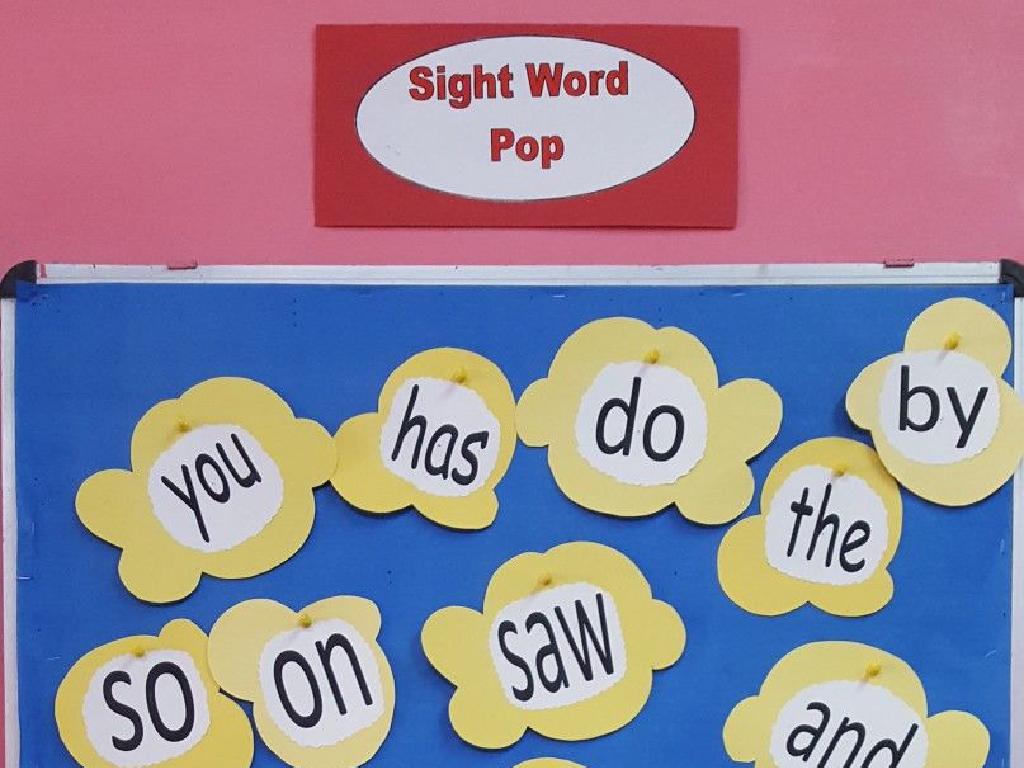Count Pictures - Up To 10
Subject: Math
Grade: Kindergarten
Topic: Counting To 10
Please LOG IN to download the presentation. Access is available to registered users only.
View More Content
Welcome to Counting!
– Learning about numbers
– Practice counting to 10
– Can we count from 1 to 10 as a group?
– Counting shows quantity
– When we count, we find out the total number of items.
– Let’s count objects together
– We’ll use pictures to count up to 10.
|
This slide introduces kindergarteners to the concept of counting within the range of 1 to 10. Start by engaging the students with the question about counting to 10 to gauge their current understanding. Emphasize the importance of counting as a fundamental math skill that helps us determine the quantity of items. Use visual aids like pictures or objects in the classroom to count together, ensuring that each child is involved in the activity. Encourage participation and make the learning process interactive and fun. The goal is to make the students comfortable with numbers and counting up to 10 by the end of the lesson.
What is Counting?
– Counting is number order
– Numbers have a special order, like 1, 2, 3, up to 10.
– Like climbing stairs
– Each number is a step higher, just like going up steps.
– Counting in daily life
– We count toys, steps, and even claps!
– Practice makes perfect
– The more we count, the better we get!
|
This slide introduces the concept of counting to Kindergarten students by comparing it to climbing stairs, which is a relatable activity for them. Emphasize that counting is not random; it follows a specific order, just like the numbers on each step of a staircase. Provide examples from everyday life where counting is used, such as counting toys during playtime or steps when walking to the park. Encourage students to practice counting in various scenarios to improve their skills. During the presentation, engage the students by asking them to count different items in the classroom or pictures in the book to make the learning process interactive and fun.
Counting Pictures: Numbers 1 to 5
– Learn numbers 1 through 5
– Match numbers with objects
– Each number pairs with a countable item
– Example: 1 – one sun
– 2 – two shoes, 3 – three apples
– Count items in pictures
– Practice by counting objects in images
|
This slide introduces the concept of counting to young learners by associating numbers with familiar objects. Start by showing pictures that represent the numbers 1 to 5, such as one sun, two shoes, three apples, four buttons, and five pencils. Encourage the students to count along with you. Use clear images that depict the exact number of items to match the number being taught. Reinforce learning by having students practice counting items in pictures provided in class or from their surroundings. This activity helps to solidify their understanding of numbers and the concept of quantity.
Counting Fun: Numbers 6 to 10
– Exploring numbers 6 to 10
– Numbers after 5: 6, 7, 8, 9, and 10
– Counting 6 apples, 10 fingers
– Practice with real items like fruits or body parts
– Let’s count objects together!
– We’ll count items in class as a group activity
|
This slide is aimed at helping Kindergarten students become familiar with the numbers 6 through 10. Start by showing them the sequence of numbers and then relate these numbers to tangible items, such as apples or fingers, to make the concept more concrete. Engage the students in a group counting activity where they can count objects in the classroom or images in a book. This hands-on approach helps solidify their understanding of quantity and number order. Encourage participation from each student and provide positive reinforcement as they practice counting. Prepare a variety of objects to count, ensuring they are safe and appropriate for the age group.
Counting Pictures Up to 10
– Pictures make numbers visible
– Count items like animals and fruits
– For example, count 5 apples or 3 dogs in a picture
– Let’s count pictures up to 10
– We’ll count together in class using fun images
– Practice makes perfect
|
This slide is designed to introduce Kindergarten students to the concept of counting using visual aids. By counting objects in pictures, such as animals, fruits, or toys, children can better understand the abstract concept of numbers. During the lesson, use engaging and colorful images to capture the students’ attention and make the counting activity enjoyable. Encourage the students to count out loud together and use their fingers to point at each item as they count. This interactive approach helps reinforce their counting skills and number recognition. Prepare a variety of images with different numbers of objects up to 10 to ensure that students get ample practice with different quantities.
Let’s Count Together!
– I’ll show you pictures to count
– Look and count the objects out loud
– Say the number you counted
– Ready? Let’s start with a picture!
|
This slide is designed to engage Kindergarten students in a counting activity that helps them practice counting up to 10. Display a picture with a certain number of objects and guide the students to count each object one by one. Encourage them to say the numbers out loud as they count. This interactive approach reinforces number recognition and counting skills. Be prepared with a variety of pictures that have different numbers of objects, up to 10, to ensure that all students can participate and practice counting within the target range. Praise their efforts and correct gently if they make mistakes. The goal is to make counting fun and to build their confidence in their ability to count.
Counting Practice: Let’s Count to 10!
– Time to count by yourself
– Use fingers to count objects
– Hold up a finger for each object you count
– Counting is fun and easy
– Smile and enjoy finding numbers in everything
– Practice makes perfect
|
This slide is designed to encourage independent counting practice for Kindergarten students. It’s important to remind them that they can use their fingers as a physical tool to help keep track of the numbers as they count different objects. Emphasize that counting should be a fun activity and encourage them to find joy in discovering numbers in the world around them. As a teacher, you can prepare various counting activities such as counting colorful beads, blocks, or even illustrations in a book. Offer positive reinforcement as they practice to build their confidence and proficiency in counting up to 10.
Counting Game: Let’s Count to 10!
– Play a counting game together
– Find and count classroom objects
– Pair up with a friend for counting
– Practice counting up to 10
|
This interactive class activity is designed to help Kindergarten students practice counting to 10 in a fun and engaging way. Set up different stations around the classroom with various objects (e.g., blocks, crayons, books) and have the students move around in pairs to count the items at each station. Encourage them to use their fingers to point to each object as they count. Provide guidance and ensure each pair is taking turns and helping each other. Possible variations of the activity could include counting colored objects, counting items in a picture, or even a counting song. The goal is to reinforce number recognition and one-to-one correspondence in a collaborative setting.
Review and Goodbye: Counting Together
– Excellent work with counting!
– Let’s count to 10 together again
– Practice makes perfect – count at home
– Try counting objects, like toys or snacks
– Ready to say goodbye? Let’s count down!
– We’ll start from 10 and go down to 1
|
This slide is meant to wrap up the counting lesson by positively reinforcing the students’ efforts and encouraging one last interactive counting exercise. It’s important to end on a high note, making the children feel accomplished. Encourage them to continue practicing at home by counting everyday items, which will help solidify their understanding of numbers. The final countdown is a fun way to engage them and signal the end of the lesson. As a teacher, you can prepare different counting activities for them to take home, such as counting the number of steps to their bed or the number of windows in their house, to keep them engaged with the concept outside of the classroom.






